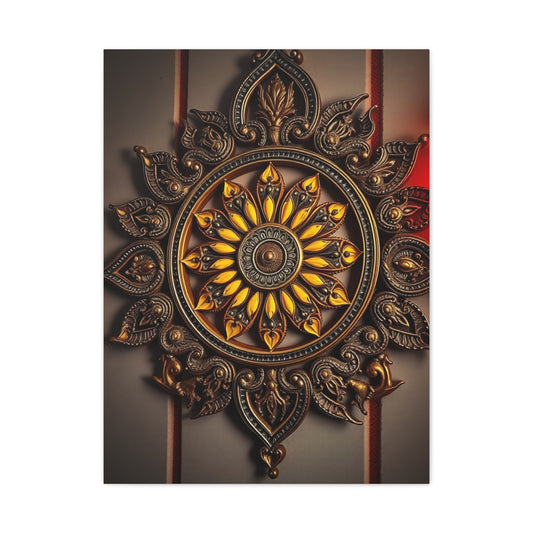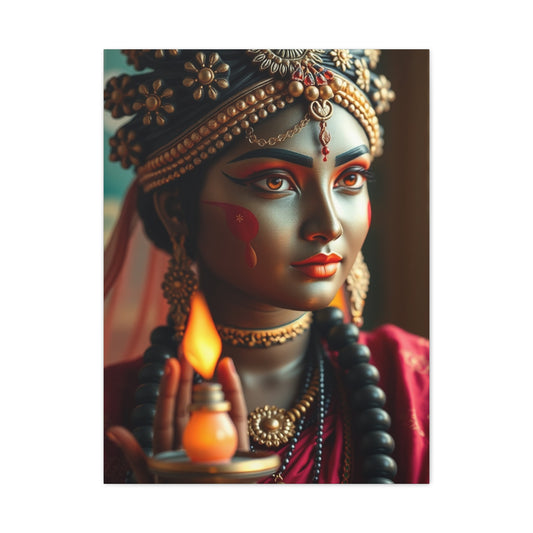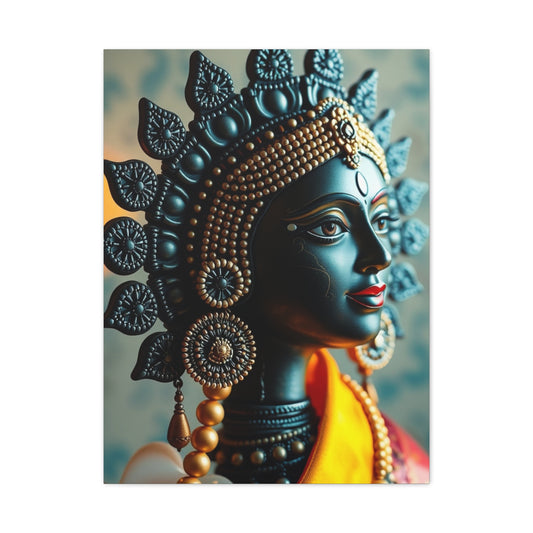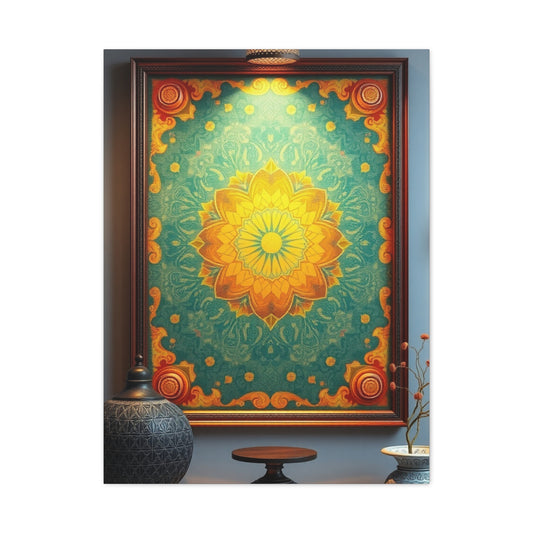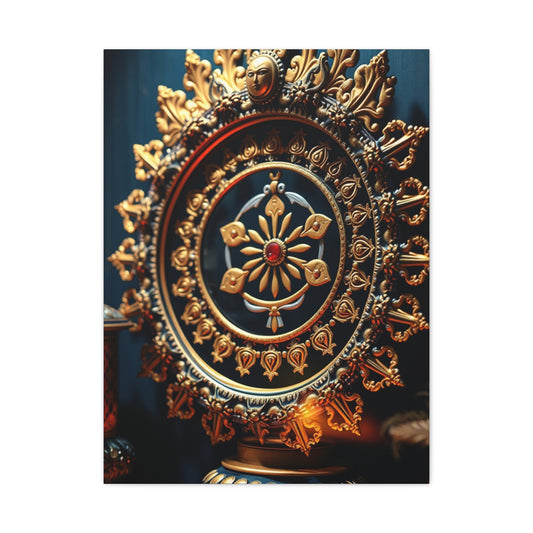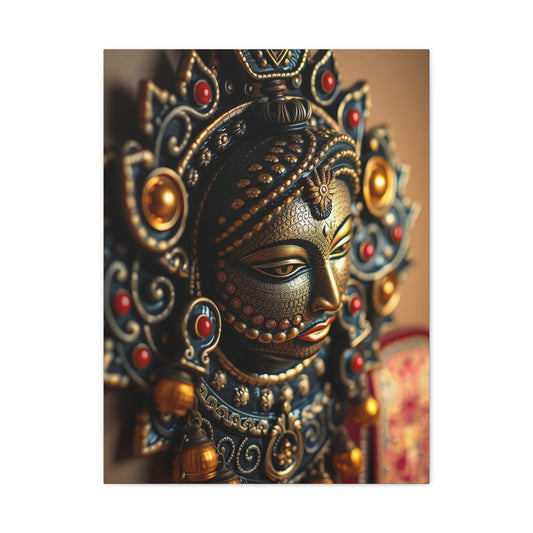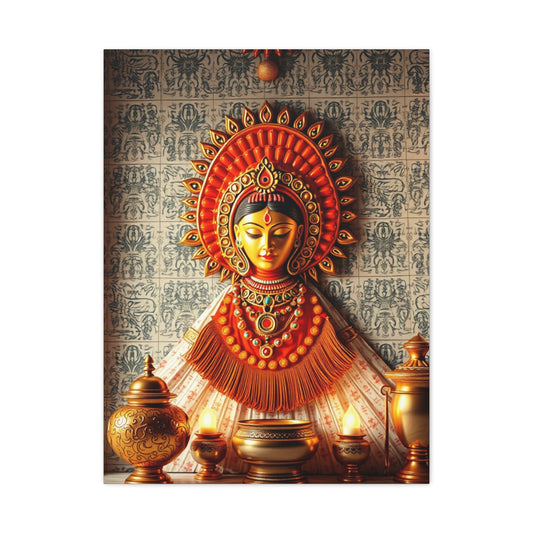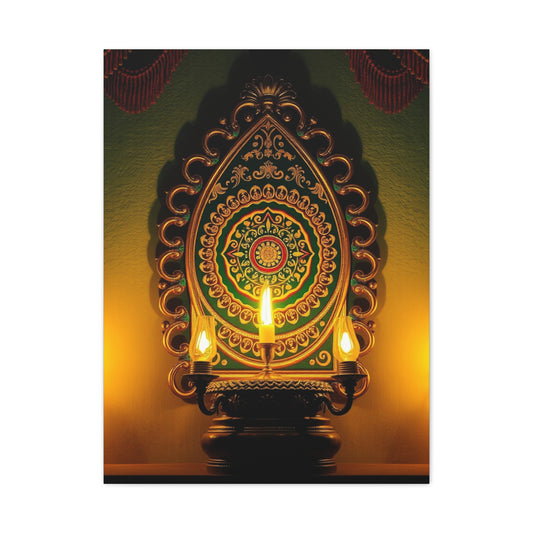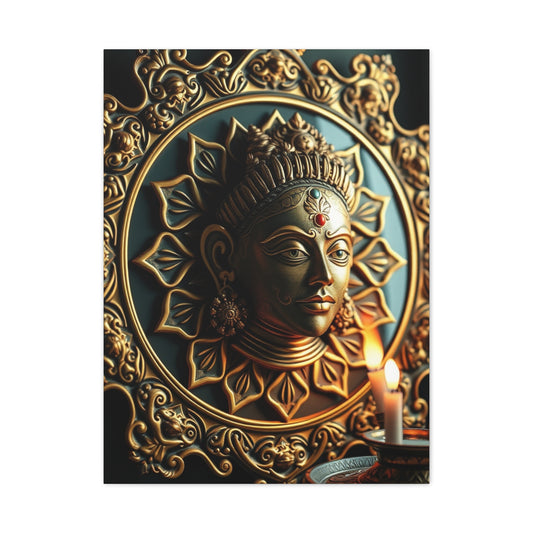-
Collection Indian Decor Art Art Wall Art & Canvas Print
Regular price From $141.23 USDRegular priceUnit price per -
Indian Decor Art Refined Canvas Wall Art & Canvas Print
Regular price From $141.23 USDRegular priceUnit price per -
Elite Indian Decor Art Vision Wall Art & Canvas Print
Regular price From $141.23 USDRegular priceUnit price per -
Indian Decor Art Supreme Canvas Wall Art & Canvas Print
Regular price From $141.23 USDRegular priceUnit price per -
Supreme Indian Decor Art Collection Wall Art & Canvas Print
Regular price From $141.23 USDRegular priceUnit price per -
Vision Indian Decor Art Art Wall Art & Canvas Print
Regular price From $141.23 USDRegular priceUnit price per -
Indian Decor Art Supreme Gallery Wall Art & Canvas Print
Regular price From $141.23 USDRegular priceUnit price per -
Masterpiece Indian Decor Art Vision Wall Art & Canvas Print
Regular price From $141.23 USDRegular priceUnit price per -
Indian Decor Art Luxury Canvas Wall Art & Canvas Print
Regular price From $141.23 USDRegular priceUnit price per
Explore the Beauty of Indian Decor Wall Art for Every Room
Throughout history, walls have not only provided shelter but also served as a stage for cultural storytelling. In India, the walls of temples, palaces, and even humble village homes have long been adorned with intricate expressions of art. From the frescoes of Ajanta and Ellora to the vivid murals of Kerala, traditional Indian wall design continues to hold a magnetic charm that breathes life into modern interiors. These designs are far more than decorative flourishes; they are a way of preserving narratives, embodying philosophy, and celebrating aesthetics in a uniquely Indian idiom.
Symbolism in traditional motifs
The motifs seen across Indian walls are rarely arbitrary. They carry symbolism that ties into mythology, spirituality, and regional heritage. Lotus flowers often represent purity and renewal, while peacocks embody beauty and immortality. Elephants etched into murals symbolize wisdom and good fortune. Mandalas and geometric motifs echo cosmic harmony and the cyclical nature of life. Each brushstroke and carved detail carries layers of meaning that transcend mere ornamentation.
Regional variations in design traditions
The spectrum of Indian wall design is vast, shaped by geography, climate, and local culture. Rajasthan, with its arid climate, boasts grand havelis adorned with colorful frescoes and mirrored mosaics. Madhubani paintings from Bihar, created on mud walls, narrate folklore through vibrant natural dyes. In southern India, the temple walls of Tamil Nadu feature sculptural reliefs depicting divine episodes, while Kerala homes often embrace delicate mural traditions painted with earthy pigments. These regional styles ensure that Indian wall decor is not monolithic but a kaleidoscope of cultural nuances.
Frescoes and murals as living history
Fresco painting in India is an ancient practice that dates back centuries, surviving in palatial structures and sacred caves. The Ajanta caves remain one of the most magnificent examples, where delicate murals portray episodes from the Jataka tales. Similarly, Bundi and Shekhawati in Rajasthan are treasure troves of fresco art, showcasing gods, daily life, and royal pageantry. Murals serve as historical documentation, narrating stories of communities and their values while enriching homes and sacred spaces with an aura of majesty.
The importance of color palettes
Color in Indian tradition carries profound significance. Red embodies passion and auspiciousness, yellow evokes wisdom and divinity, green symbolizes fertility, and blue connects to Krishna and the infinite cosmos. Traditional wall designs draw heavily upon natural pigments sourced from minerals, plants, and earth. Ochres, indigos, and malachite greens create palettes that feel rooted and organic. Incorporating such palettes into contemporary interiors not only preserves authenticity but also nurtures a sense of warmth and continuity.
Textures and materials in heritage decor
Walls in traditional Indian homes are rarely plain. Lime plaster, terracotta tiles, carved wood panels, and stone inlay all play a role in crafting tactile experiences. The art of jali work—intricately carved stone screens—turns walls into breathing organisms, filtering light and air while creating mesmerizing shadows. Mirror inlay, popular in palaces of Rajasthan, multiplies light within dim chambers, producing a dazzling effect. These traditional methods invite homeowners today to rethink walls not as static planes but as sensory surfaces.
Spirituality and sacred geometry
Indian wall designs often incorporate sacred geometry as a bridge between the physical and metaphysical. Yantras, mandalas, and concentric patterns are carefully placed to generate harmony and positive energy. In Vastu Shastra, the ancient science of spatial design, wall motifs and colors are chosen to enhance prosperity and peace. The placement of a rising sun mural on the eastern wall or lotus patterns in the prayer room reflects how art merges seamlessly with cosmic philosophy.
Storytelling through folk art
India’s folk traditions thrive on oral and visual storytelling, and walls have always been a primary canvas. Warli art from Maharashtra employs minimalistic white figures on earthy brown backgrounds to depict agricultural life and rituals. Gond art from Madhya Pradesh, with its dotted detailing, animates flora and fauna in mythological contexts. Pattachitra in Odisha offers elaborate mythic narratives through meticulous line work. These folk styles are versatile, easily adapted into modern interiors while retaining their rustic, narrative essence.
Reviving traditional techniques in contemporary homes
Today, traditional wall design is experiencing a revival as homeowners seek authenticity and cultural connection. Instead of replicating ornate murals, many reinterpret heritage motifs with minimalism. For instance, a Madhubani-inspired mural might be painted on a single accent wall, or Warli figures could be stenciled onto stairwell walls. Natural lime plaster, embedded with earthy pigments, can provide a heritage texture while remaining eco-friendly. The emphasis is on fusing age-old wisdom with present-day sensibilities.
Craftsmanship and artisanship
Behind every traditional wall design lies the artistry of skilled craftsmen. Artisans who have inherited mural painting, carving, and inlay techniques continue to keep these traditions alive despite modern challenges. Supporting these crafts not only sustains livelihoods but also preserves intangible cultural heritage. By inviting artisans to recreate traditional works within homes, residents become custodians of a legacy that extends far beyond decoration.
How traditional design influences mood
Walls adorned with traditional art do more than beautify a space—they shape the ambiance. A mural of a dancing Krishna infuses playfulness, while geometric mandalas inspire focus and serenity. Warm earth tones generate coziness, while mirrored mosaics elevate brightness and grandeur. Traditional Indian wall design enhances not only aesthetics but also emotional well-being, aligning interiors with cultural rhythms that nourish the soul.
Incorporating heritage in different rooms
Traditional Indian wall decor adapts fluidly across living spaces. In living rooms, murals or fresco-inspired panels become conversation pieces. Bedrooms can feature delicate floral patterns for tranquility. Dining spaces may incorporate motifs of abundance like mangoes or kalash symbols. Prayer rooms remain sanctuaries for sacred geometry and mythological figures. By thoughtfully integrating tradition, each room tells a distinct yet harmonious story.
Sustainability of traditional practices
Many traditional wall design methods align with sustainable practices. Natural lime plaster, eco-friendly pigments, and hand-crafted wood panels reduce reliance on synthetic materials. Traditional artisans use local resources, minimizing ecological footprints. By reintroducing these heritage methods into contemporary homes, we create designs that are not only culturally resonant but also environmentally responsible.
The evolving relevance of traditional designs
While global trends shift toward minimalism and modernism, traditional Indian wall design remains enduringly relevant. It offers a counterbalance to uniform interiors, reminding us of cultural identity in a rapidly changing world. By embracing these designs, homeowners nurture continuity with the past while crafting spaces that feel rooted, soulful, and enduring.
Redefining elegance on a budget
Creating a beautiful home often conjures visions of elaborate designs, costly art pieces, and high-end furnishings. Yet the essence of Indian wall decor proves that elegance need not come with extravagance. Across centuries, Indian households have adorned their walls with simple yet evocative details—hand-painted motifs, symbolic hangings, and repurposed everyday objects—that radiate culture and warmth. Budget-friendly approaches to wall design can achieve a refined ambiance without overextending resources, all while embracing ingenuity and heritage.
Harnessing the power of simplicity
The true charm of Indian wall decor lies in its adaptability. A single well-chosen artifact, a splash of color, or a creative arrangement can instantly transform an otherwise plain wall. Instead of viewing affordability as a limitation, it can be approached as an invitation to innovation. From hand-painted terracotta plates to humble fabric hangings, budget-friendly choices can evoke intimacy, authenticity, and vibrancy.
Using color as a transformative element
Color is one of the most cost-effective tools in wall decoration. Indian traditions offer an immense palette that resonates with meaning and mood. Deep reds signify energy and prosperity, while turmeric yellows usher in cheerfulness. Cobalt blue evokes divinity, and earthy ochres recall rural landscapes. Even a single accent wall painted in one of these hues can redefine the entire room’s ambiance. Pairing strong shades with neutral backgrounds prevents overwhelming the space while still maintaining richness.
Affordable art inspired by folk traditions
India’s folk art traditions are not confined to museums or temples; they have always belonged to everyday households. Reproductions of Warli art, Gond patterns, or Madhubani paintings are widely available and often modestly priced. Even small hand-painted canvases can be grouped to create a striking gallery wall. These art forms are timeless, and their affordability makes them accessible to anyone wishing to enrich their walls with cultural resonance.
Plates, mirrors, and eclectic arrangements
Decorative plates, often overlooked, offer inexpensive yet dazzling options. Hand-painted ceramic or terracotta plates arranged in clusters add texture and rhythm to walls. Similarly, mirrors framed in wood, brass, or even simple hand-painted borders can create an illusion of space and amplify natural light. Such objects, when arranged thoughtfully, provide both aesthetic and practical benefits without draining budgets.
Fabric and textile artistry
Textiles have always been central to Indian artistry, and they remain one of the most affordable media for wall decoration. A small wall can be elevated by hanging a block-printed dupatta, an embroidered panel, or even a fragment of handwoven fabric. Kalamkari pieces or Kantha work, mounted within simple wooden frames, create focal points that blend history and artistry. Old sarees, when repurposed as tapestries, introduce both nostalgia and vibrant color into interiors.
Bells, hangings, and spiritual motifs
Few items embody Indian decor as evocatively as bells and wall hangings. Brass bells, whether clustered or solitary, generate subtle chimes while also serving as spiritual symbols. Wall hangings featuring motifs like elephants, parrots, or the sacred tree of life are widely available at modest prices. Placed near entrances, these accents welcome positivity and mirror traditional practices that have endured for centuries.
Repurposing everyday objects
Budget-friendly decor often thrives on resourcefulness. Everyday objects can become striking wall accents with a touch of imagination. Old wooden window frames can be mounted as rustic art pieces. Woven baskets or hand fans double as textured wall features. Even discarded clay pots, when painted or etched, can be repurposed into sculptural displays. This approach not only saves costs but also infuses a unique, one-of-a-kind character into the home.
Handcrafted wall shelves and key holders
Practical items like shelves and key holders can double as decor. Wooden shelves carved in simple patterns allow for the display of small artifacts, books, or plants, while also serving utilitarian needs. Key holders decorated with miniature paintings, tribal motifs, or brass fittings contribute both organization and artistry. These humble additions reflect the Indian ethos of merging functionality with beauty.
The magic of marble and stone accents
Though marble may sound extravagant, small decorative pieces like engraved marble plates or carved stone hangings are often available at affordable price points. These accents draw from India’s long association with stone craftsmanship while remaining modest in scale. A small marble piece mounted on a textured wall becomes a quiet yet dignified statement of heritage.
Drawing inspiration from festivals
Festivals in India are visual spectacles, marked by exuberant colors and symbolic motifs. Incorporating festival-inspired designs into permanent or semi-permanent wall decor offers an inexpensive way to bring celebration into everyday life. Torans crafted from fabric or beads, small rangoli stencils painted onto walls, or even string lights arranged artistically can capture the festive spirit year-round without significant expenditure.
Nature as the ultimate artist
Plants and natural elements have always been part of Indian decor traditions. Hanging planters, simple earthen pots mounted on walls, or creepers trained along wooden supports can create living walls at minimal cost. Adding natural foliage not only decorates but also purifies the air and creates a sense of serenity. Seashells, dried flowers, or even driftwood collected during travels can be arranged creatively to add organic beauty.
DIY wall painting ideas
One of the most cost-effective ways to personalize walls is through do-it-yourself painting. Stenciled motifs, freehand mandalas, or even geometric patterns painted with contrasting colors provide instant transformation. Handprints dipped in natural pigments, reminiscent of ancient traditions, can also serve as playful yet culturally rooted decorations. DIY efforts not only save money but also infuse the space with individuality and pride.
Affordable symbolism with spiritual art
India’s sacred symbols—such as Om, Swastik, or the Kalash—are powerful motifs that can be represented in subtle yet impactful ways. Small wooden carvings, metal cutouts, or even hand-painted versions of these symbols can be displayed on walls without great expense. Their presence contributes both aesthetic appeal and spiritual reassurance, resonating with the cultural emphasis on harmony and prosperity.
Blending old and new artifacts
Budget-friendly decor often emerges from a blend of inherited pieces and affordable new finds. A simple brass lamp inherited from the family, when paired with inexpensive framed prints, creates a wall rich in both memory and charm. Old photographs in handmade frames tell personal stories while also celebrating heritage. By weaving together fragments of the past and accessible contemporary accents, walls acquire depth without demanding lavish spending.
Incorporating shadows and light
Lighting can be as much a part of wall decor as any artifact. Simple wall-mounted lanterns, diyas placed on narrow shelves, or cutwork lampshades can cast beautiful shadows that animate plain surfaces. The interplay of light and shadow, long appreciated in Indian architectural traditions, requires minimal financial investment but adds immeasurable ambiance.
Embracing asymmetry and eclecticism
Decorating on a budget allows freedom from rigid formalism. Walls can become canvases for eclectic combinations: a cluster of woven baskets alongside a hand-painted canvas, or a line of clay masks punctuated by brass bells. Asymmetry creates movement and intrigue, ensuring that walls feel vibrant rather than overly curated. This eclecticism echoes the Indian tradition of layering—where diverse styles, textures, and colors coexist harmoniously.
Sustainability through affordable decor
Budget-friendly wall decor often aligns naturally with sustainable practices. By repurposing objects, supporting local crafts, and using eco-friendly materials, one contributes to environmental responsibility. Walls decorated with bamboo frames, recycled wood, or clay artifacts reflect a respect for both nature and tradition. Such choices foster a home that is aesthetically pleasing, culturally rich, and environmentally conscious.
How budget choices impact ambiance
Contrary to the belief that only expensive decor creates impact, affordable Indian wall accents often carry greater intimacy. A simple hand-painted plate may evoke childhood memories, while a textile hanging might reflect ancestral craftsmanship. These modest elements contribute to a sense of authenticity, creating homes that feel lived-in, soulful, and welcoming. The emotional resonance of budget-friendly decor often surpasses that of costly but impersonal pieces.
A meeting of eras within four walls
Indian wall decor has always been a reflection of identity, history, and aesthetics. In the modern age, interiors are no longer bound to rigid categories of old or new; instead, they celebrate convergence. Walls now serve as bridges where ancestral motifs converse with contemporary sensibilities, resulting in a tapestry that is at once familiar and refreshingly novel. This fusion has given rise to a distinctive style of Indian decor—one that carries the warmth of tradition and the sophistication of modernity.
The essence of fusion design
Fusion design is not about replacing the past with the present; rather, it is about weaving the two together. Modern Indian wall decor acknowledges the enduring beauty of heritage while reinterpreting it for contemporary lifestyles. A wall may display a centuries-old motif through sleek metallic art, or it may frame a minimalist canvas that draws inspiration from tribal storytelling. This philosophy respects continuity while embracing transformation.
Tradition reimagined through modern materials
One of the hallmarks of fusion is the adaptation of traditional motifs into modern media. Ancient symbols once carved into stone are now reimagined in stainless steel or brushed aluminum. Mandalas that adorned temple floors are reinterpreted as laser-cut wall panels. Terracotta textures are simulated with lightweight composites that fit seamlessly into urban apartments. Such reinterpretations ensure that cultural resonance thrives even within modern architectural frameworks.
Geometry as a unifying thread
Indian design has always been deeply rooted in geometry, whether in the yantras of Vastu Shastra or the intricate jali screens of Mughal architecture. Modern wall decor embraces this legacy by fusing geometry with contemporary minimalism. Honeycomb panels, tessellated tiles, and abstract geometric murals echo the mathematical precision of ancient designs while offering sleek, modern aesthetics. This continuity of geometry ensures that tradition and modernity remain aligned.
Color palettes of fusion decor
Colors in modern Indian wall design reflect a delicate balance between heritage richness and modern restraint. Jewel tones like sapphire, emerald, and ruby are paired with muted backgrounds of ivory, taupe, or slate grey. Gold accents remain a nod to opulence, yet they are applied with moderation, ensuring elegance rather than excess. This careful interplay allows walls to retain cultural vibrancy while appealing to modern preferences for subtlety and balance.
Contemporary reinterpretations of folk art
Folk art traditions, once sprawling across village walls, are now adapted into refined contemporary expressions. Warli motifs might appear as minimalist outlines painted across a monochrome wall, while Gond patterns transform into digital prints mounted on sleek panels. Madhubani art, traditionally dense and colorful, is reimagined in single-tone line drawings that align with modern minimalism. These reinterpretations keep folk art alive while making it compatible with the aesthetics of present-day interiors.
Metal and stone in modern artistry
Metal and stone, long revered in Indian craftsmanship, now play new roles in wall decor. Intricate brass patterns once reserved for temples are recast as metal wall sculptures in urban homes. Stone inlay work, once monumental in palaces, is adapted into smaller panels with contemporary motifs. The result is a refined balance where time-honored materials continue to whisper stories, yet their forms suit contemporary sensibilities.
The role of lighting in modern Indian walls
Lighting is essential in creating fusion interiors. Traditional lamps and diyas find echoes in modern recessed lighting or backlit panels that highlight wall art. Cove strip lights may illuminate a mural inspired by classical dance, merging technology with heritage. Shadows created by jali-inspired cutouts or metallic screens generate dynamic wall effects, reintroducing the play of light and form seen in old palaces, but with a modern twist.
Fusion furniture as part of the all design
Furniture is often underestimated in wall decor, yet in fusion design, it acts as a vital extension. A carved wooden cabinet placed against a geometric-patterned wall creates a dialogue between eras. Floating shelves may display brass figurines beside modern abstract sculptures. Walls, furniture, and accessories together create a layered narrative where traditional craftsmanship complements modern ergonomics.
Minimalism infused with symbolism.
Modern Indian wall decor often embraces minimalism, but minimalism does not equate to emptiness. Instead, walls may hold a single artifact—a sculptural brass Om, a lone tribal mask, or a framed monochrome folk design—that embodies depth without overwhelming space. The restraint of minimalism combined with the symbolism of tradition achieves balance, offering serenity alongside cultural continuity.
The evolving role of textures
Texture plays a crucial role in bridging the old and the new. Smooth plastered walls may be adorned with rough-hewn wooden panels reminiscent of ancient architecture. Polished metal contrasts with earthy clay accents. Velvet wall hangings coexist with sleek glass partitions. This interplay of tactile experiences enriches the modern home, ensuring that walls appeal not only visually but also sensorially.
Spirituality in modern contexts
Spirituality remains integral to Indian decor, yet its expression in modern homes is subtle and refined. Instead of elaborate murals of deities, homeowners may choose abstract art that evokes spiritual energy. A mandala etched into a glass panel or a minimalist brass sculpture mounted on a neutral wall channels devotion without overwhelming contemporary design aesthetics. This approach respects tradition while catering to the desire for understated elegance.
Eclectic combinations for unique expression
Modern Indian wall design thrives on eclecticism. A sleek contemporary wall clock might be flanked by vintage framed textiles. Minimalist murals may coexist with ornate brass hangings. Eclectic combinations not only showcase personal taste but also reflect the pluralism of Indian culture, where countless traditions coexist and evolve. This flexibility allows walls to become unique canvases for self-expression.
Integration of modern technology
Technology plays a role in shaping modern wall decor without erasing tradition. Digital printing brings folk designs onto wallpapers and panels with stunning precision. Projection lighting can animate walls with shifting mandala patterns during gatherings. Acoustic panels are designed with traditional motifs, combining function with beauty. This integration demonstrates how modern tools can enhance, rather than diminish, cultural motifs.
The influence of global design
While modern Indian wall decor remains rooted in heritage, it is not immune to global currents. Scandinavian minimalism, Japanese wabi-sabi aesthetics, and Mediterranean textures often mingle with Indian traditions. A wall painted in muted grey may feature a vivid Madhubani frame; a sleek white interior may host brass lamps that glow with ancestral familiarity. The fusion thus extends beyond time, embracing cross-cultural exchange while safeguarding identity.
How fusion decor affects ambiance.
Fusion wall design does more than harmonize old and new; it creates dynamic atmospheres that engage both nostalgia and aspiration. A mural inspired by folk art, painted in monochrome, brings quiet dignity. Metallic geometric sculptures paired with earthy clay accents create contrasts that evoke curiosity. These combinations influence mood, stimulating reflection, conversation, and appreciation of diversity.
Sustainability within modern fusion
Modern fusion design also emphasizes sustainability, drawing from traditional eco-friendly methods while employing modern efficiency. Lime-based plasters, bamboo frames, and natural pigments coexist with recycled composites and energy-efficient lighting. This balance ensures that fusion wall decor not only honors culture but also addresses contemporary ecological responsibilities. The result is interiors that feel rooted, responsible, and forward-looking.
Adapting fusion to different spaces
Fusion wall decor adapts differently depending on the room. In living rooms, a statement wall may combine a traditional mural with minimalist furniture. Bedrooms may feature subtle patterns in muted tones, reinterpreting heritage in restful forms. Dining areas might showcase vibrant colors inspired by folk art, balanced by modern lighting. Each space becomes a reflection of harmony between past and present, tailored to its function.
The significance of colour in intimate spaces
Colour is not merely an aesthetic choice; it shapes atmosphere, influences mood, and defines character. In the Indian tradition, colours have always held profound symbolic meaning, shaping rituals, festivals, and architecture. When it comes to bedrooms, the hues chosen for walls directly affect comfort, restfulness, and emotional resonance. Drawing inspiration from Indian palettes offers a rich spectrum—from vibrant jewel tones to gentle pastels—that can transform bedrooms into sanctuaries of calm, passion, or vitality.
The psychology of Indian colours
Each colour carries a particular emotional vibration. Red, often linked to auspicious beginnings, evokes warmth and intimacy, while yellow radiates cheer and optimism. Blue offers serenity, connecting to divinity and vast skies, while green symbolizes renewal and tranquility. These associations are deeply rooted in Indian heritage, making the palette particularly meaningful for bedrooms where emotional comfort and personal identity converge.
Children’s bedrooms and playful palettes
For children, bedrooms are spaces of learning, play, and dreams. Colours drawn from Indian palettes can cultivate joy and creativity while offering comfort.
-
Pink exudes tenderness and affection, nurturing a sense of care.
-
Purple, historically connected to wisdom, encourages imagination and curiosity.
-
Light blue offers calmness, balancing energy while supporting focus.
Accents of bright orange or lime green can be introduced through murals, patterns, or wall art, creating a dynamic yet harmonious environment that reflects the exuberance of childhood.
Romantic palettes for newlyweds
In Indian culture, colour often conveys romance, blessing, and auspiciousness—qualities well suited for newlyweds’ bedrooms. Shades of soft pink provide warmth and tenderness, symbolizing love and harmony. Deeper tones of maroon or crimson can be used as accent walls to evoke passion, balanced by neutrals that prevent heaviness. Subtle golden undertones, achieved through textures or motifs, add a touch of celebration, echoing the grandeur of Indian weddings while creating intimacy within the room.
Contemporary sophistication with muted hues
Modern bedrooms often lean towards subtlety, and Indian palettes offer an abundance of muted yet evocative shades. Grey, when paired with wooden accents or vibrant textiles, exudes elegance without sterility. Beige, reminiscent of sandstone forts and desert landscapes, serves as a versatile backdrop, allowing brighter elements to stand out. Pastel greens and blues create a restful ambiance, drawing from natural Indian landscapes while aligning with contemporary minimalism.
Blue as a timeless Indian shade
Blue occupies a special place in Indian art, from depictions of Lord Krishna to indigo-dyed textiles. In bedrooms, light shades of blue foster calm and serenity, ideal for relaxation. Darker shades such as cobalt or navy create depth and sophistication, especially when contrasted with white or cream. Pairing blue with accents of turquoise or teal introduces vibrancy, echoing the shimmering waters of coastal India while maintaining tranquility.
The charm of green and its natural appeal
Green embodies renewal, fertility, and peace. Light greens create restful spaces that invite calm, while deeper emerald tones add richness and grandeur. Bedrooms with green walls can be paired with natural wooden furniture or woven textiles, enhancing the connection to nature. Accents of pistachio or lime bring freshness, while darker shades such as bottle green establish depth and intimacy, especially when balanced with golden or cream highlights.
Yellow and its joyful energy
Yellow has always been associated with learning, celebration, and spirituality in Indian culture. Bedrooms painted in soft shades of yellow radiate warmth, creating uplifting and cheerful environments. Pale butter yellow provides a soothing backdrop, while deeper mustard tones offer vibrancy. Paired with earthy browns or cool blues, yellow walls reflect sunlight beautifully, turning the bedroom into a luminous, optimistic retreat.
Shades of red and their transformative power
Red has a strong presence in Indian aesthetics, symbolizing power, love, and auspiciousness. For bedrooms, the key lies in moderation. Deep red or maroon accent walls can provide dramatic focal points, best balanced with neutral companions like beige or cream. When used in muted tones such as terracotta, red offers warmth without overwhelming the senses. Patterns inspired by Indian textiles—like paisleys or floral motifs—can be painted in red tones to enhance intimacy and depth.
Neutral palettes for understated elegance
Neutrals, though often understated, carry immense potential in Indian-inspired bedrooms. Shades of ivory, cream, or sandstone recall the simplicity of traditional mud homes and the grandeur of marble palaces. These tones provide calm, uncluttered spaces while allowing accents such as colorful fabrics, brass lamps, or carved wooden panels to shine. Neutrals ensure adaptability, creating a timeless canvas that can be personalized with seasonal or thematic changes.
Jewel tones for opulence
India’s history is closely tied to gemstones and regal textiles, and jewel tones continue to inspire interiors. Sapphire blue, emerald green, and ruby red can be introduced in bedrooms through bold accent walls or intricate patterns. When paired with muted tones, these colors elevate the space without overwhelming it. Subtle metallic highlights—gold or bronze—complement jewel tones, creating bedrooms that feel regal yet welcoming.
Earth-inspired palettes
India’s landscapes, from deserts to forests, inspire earthy shades that are perfect for bedrooms. Clay reds, terracotta oranges, and sandstone browns create grounded, intimate spaces. These tones resonate with traditional architecture, recalling old havelis and rural homes. Pairing them with muted greens or soft creams softens their intensity while maintaining their natural warmth. Earth tones also align with sustainable design, emphasizing harmony with nature.
The role of patterns in bedroom walls
Indian palettes rarely exist as plain swaths of colour; patterns often accompany them. Wall stencils inspired by mandalas, floral vines, or tribal motifs can be painted in contrasting or complementary shades. Stripes of varying tones add visual depth, while borders in metallic shades echo traditional wall frescoes. Such patterns prevent monotony, allowing colours to express not just mood but narrative.
Seasonal adaptation of palettes
Indian culture has long tied colours to seasons. Bedrooms can adapt to these rhythms for freshness throughout the year. Bright yellows and oranges evoke spring festivals, while deep blues and greens resonate with the monsoon. Warmer reds and browns bring coziness during the winter months. By layering textiles such as curtains or bedspreads in seasonal hues, the wall colours remain versatile, shifting subtly with changing moods and times.
How lighting shapes wall colours
The perception of colour depends heavily on light. In bedrooms, natural sunlight enhances warm tones like yellow or peach, while artificial lighting can intensify cooler hues such as blue or green. Soft diffused lighting works best for bold jewel tones, preventing them from feeling heavy. Strategically placed lamps can highlight painted patterns or accent walls, allowing colours to reveal their depth and nuance at night.
Balancing personal taste with tradition
While Indian palettes are steeped in symbolism, bedroom walls ultimately reflect personal taste. Some may prefer vibrant tones reminiscent of festivals, while others gravitate towards subdued hues that foster calm. The art lies in balancing individual preferences with cultural inspiration. Whether choosing bold red or subtle beige, what matters most is how the colour resonates with the inhabitants, offering comfort and authenticity.
How colour influences mood in bedrooms
Scientific studies align with traditional wisdom in acknowledging that colour impacts mood. Bright shades such as yellow or pink uplift and energize, while cooler shades like blue and green soothe and relax. Deep tones such as maroon or navy create intimacy, while neutrals provide grounding. In the bedroom—the most personal space of the home—these effects are particularly profound, shaping rest, dreams, and emotional well-being.
The allure of personal expression
Walls are more than boundaries; they are blank canvases for imagination and cultural expression. DIY projects allow homeowners to infuse their spaces with personality, creativity, and heritage. In India, where traditional crafts and motifs abound, do-it-yourself wall decor becomes a bridge between cultural legacy and individual artistry. Through simple materials and innovative techniques, walls transform into narrative spaces that are uniquely yours.
Choosing a theme for DIY projects
The first step in creating Indian-inspired DIY wall decor is selecting a theme that resonates with personal taste and cultural context. One may draw inspiration from folk art, spirituality, regional motifs, or natural elements. Mandalas, paisleys, tribal patterns, floral designs, or symbolic representations like Om and Swastik offer versatile starting points. A clear theme ensures cohesion across multiple DIY elements while allowing flexibility for experimentation.
Materials for Indian DIY wall art
Traditional Indian wall art often relies on accessible materials that are easily adapted for modern DIY projects. Common resources include MDF boards, terracotta, brass sheets, fabric, glass, small mirrors, and natural pigments. Recycled or repurposed materials—old sarees, wooden crates, cardboard, or clay pots—add sustainability while introducing texture and character. Craft stores provide acrylic paints, varnishes, glue, and brushes that complete the palette for creating vibrant, lasting designs.
MDF-based ethnic wall decor
MDF boards provide a versatile base for Indian-inspired wall art. To create an ethnic piece, one can paint a base layer in black or deep brown, then attach MDF cutouts in geometric or floral shapes. Painting these cutouts in shades of gold, burnt sienna, and bronze evokes a rustic yet regal aesthetic. Small mirrors or bead embellishments can be added to create reflective accents. The final step of varnishing protects the artwork while giving it a polished finish. This approach balances simplicity with a sense of handcrafted elegance.
Shadow boxes with brass figurines
Shadow boxes transform three-dimensional elements into decorative focal points. Using a small box, a canvas, or fabric as a backdrop, one can mount brass figurines such as miniature Dasavatharam sets, elephants, or deities. Gold paint, lace, and pearl embellishments add luxury, while careful placement ensures visual balance. Shadow boxes can be mounted on walls individually or as part of a gallery arrangement, turning compact spaces into showcases of tradition and craftsmanship.
DIY art walls with mandalas and folk motifs
Mandala painting remains a meditative and culturally significant DIY project. Using stencils or freehand drawing, mandalas can be painted directly onto walls or on canvas panels. Similarly, folk motifs like Warli stick figures, Gond patterns, or Madhubani designs can be adapted to modern spaces. Choosing monochromatic or minimal color schemes balances complexity with subtlety, ensuring that intricate designs do not overwhelm a room. The repetitive patterns of mandalas and folk art offer rhythm and harmony, enhancing both visual appeal and emotional resonance.
Repurposing old decor
Recycling old items is a hallmark of budget-conscious DIY wall decor. Wooden window frames, vintage mirrors, or broken furniture panels can be reimagined as wall art. Old sarees, dupattas, or embroidered fabric pieces mounted on simple frames create textured tapestries. Terracotta plates, painted with traditional motifs, can be arranged in clusters to form a lively composition. This repurposing not only minimizes waste but also imbues walls with layers of history and memory.
Creating wall hangings from natural elements
Nature offers abundant inspiration for DIY projects. Dried flowers, twigs, shells, and leaves can be arranged into textured wall hangings. Small planters or hanging pots add greenery, while painted stones or driftwood introduce sculptural elements. Combining organic textures with painted patterns or fabrics produces dynamic, tactile compositions. These installations create a connection to the natural world, reflecting the Indian tradition of integrating flora and fauna into artistic expression.
Using color creatively in DIY projects
Paint remains one of the most accessible and transformative tools. Combining earthy tones with jewel shades enhances cultural resonance. Gold and bronze highlights evoke traditional opulence, while pastel backgrounds offer calm and versatility. Gradient effects, ombre transitions, or stenciled patterns introduce depth without requiring professional skills. Careful attention to color contrast and harmony ensures that DIY wall art contributes to overall room aesthetics rather than appearing haphazard.
Incorporating symbolic elements
Symbols carry power and meaning in Indian culture, and integrating them into DIY projects enhances both decor and spiritual ambiance. Om, Swastik, lotus, kalash, or sun motifs can be painted, carved, or crafted in metal or clay. Placement is key; for instance, symbols facing east or north are traditionally considered auspicious. Even small, subtle symbols embedded in larger compositions contribute to a sense of mindfulness, tradition, and positive energy.
Layering textures and materials
Successful DIY wall decor often relies on layering textures. Combining smooth painted surfaces with rough clay accents, metallic ornaments, and fabric overlays creates depth and intrigue. Small mirrors, beads, or sequins can punctuate designs with reflective sparkle. Layering not only enhances visual interest but also echoes the multidimensionality of traditional Indian interiors, where walls frequently combine frescoes, carvings, and textiles.
Framing and mounting techniques
Even modest DIY pieces benefit from thoughtful framing or mounting. Wooden frames, floating frames, or simple clamps can elevate the presentation. Wall-mounted shelves or shadow boxes allow three-dimensional pieces to protrude slightly, enhancing presence. String, wire, or hooks can suspend lightweight items in clusters or grids, creating patterns and rhythms that contribute to overall harmony. Proper mounting ensures durability while maintaining aesthetic integrity.
Seasonal and thematic rotations
DIY projects allow for adaptability. Wall art can be rotated seasonally, reflecting Indian festivals, moods, or personal inspiration. Diwali-themed arrangements with lamps and rangoli-inspired stencils, Holi-inspired bursts of color, or autumnal tones for monsoon months can transform walls dynamically. The ability to refresh and reinterpret designs enhances both creativity and cultural resonance.
Engaging the family in DIY decor
Creating wall decor can be a collective activity. Children can paint mandalas, adults can work on stenciling or assembling shadow boxes, and older family members can contribute patterns inspired by traditional knowledge. This collaborative approach not only results in diverse designs but also strengthens emotional connections to the space. DIY walls thus become shared narratives, preserving familial and cultural heritage.
Budget-conscious approaches
One of the greatest advantages of DIY wall decor is cost-effectiveness. Materials can often be sourced locally, repurposed, or substituted creatively. Acrylic paints, inexpensive MDF boards, recycled glass, and old fabrics offer countless possibilities at minimal expense. Crafting walls by hand ensures that personal creativity, rather than financial outlay, drives design. The outcome is a space that feels authentic, intimate, and rich in cultural identity.
Combining DIY with purchased accents
DIY pieces need not exist in isolation. Simple accessories, such as small brass bells, inexpensive ethnic prints, or decorative plates, can complement hand-crafted elements. Arranging these objects alongside DIY art creates a curated look, combining professional polish with personal touch. This hybrid approach allows for both customization and cohesion, resulting in walls that feel thoughtfully layered.
Celebrating regional diversity
Indian DIY wall projects can draw from regional aesthetics, allowing walls to tell stories of geography and culture. Rajasthani mirror work, Kerala mural motifs, Madhubani illustrations, or Kashmiri floral patterns can be interpreted in miniature through paint, fabric, or clay. This regional diversity enriches interiors, transforming walls into microcosms of India’s cultural tapestry.
How DIY projects affect ambiance
DIY wall decor impacts ambiance on multiple levels. Hand-crafted designs invite a sense of intimacy, care, and mindfulness. The visible touch of human effort imbues spaces with warmth and personality. Combining color, texture, symbolism, and narrative creates walls that are not just visually appealing but emotionally resonant. These walls stimulate conversation, reflection, and pride, enhancing both functionality and aesthetic pleasure.
Preserving cultural heritage through DIY
Beyond decoration, DIY Indian wall projects serve as a form of cultural preservation. By engaging with traditional motifs, colors, and techniques, homeowners participate in the transmission of heritage. Even small adaptations—modernized mandalas, painted textiles, or shadow boxes with miniature deities—keep ancestral knowledge alive while making it relevant for contemporary life. DIY walls thus become repositories of memory, identity, and creativity.
Conclusion
Indian wall decor offers a rich tapestry where tradition, creativity, and modern sensibilities intertwine, transforming ordinary spaces into reflections of culture and personality. From timeless frescoes and folk motifs to budget-friendly accents, contemporary fusion designs, thoughtful colour palettes, and imaginative DIY projects, walls become canvases that tell stories, evoke emotion, and celebrate heritage. Whether drawing inspiration from regional art forms, symbolic motifs, or natural textures, each approach allows homeowners to craft spaces that are aesthetically vibrant, emotionally resonant, and culturally meaningful. By balancing innovation with reverence for tradition, Indian wall decor demonstrates that beauty does not require extravagance; it thrives in intention, craftsmanship, and imagination. Ultimately, incorporating these designs nurtures homes that are not only visually appealing but deeply personal, offering an enduring connection to India’s artistic legacy while embracing contemporary lifestyles, making every wall a living testament to creativity, culture, and identity.

